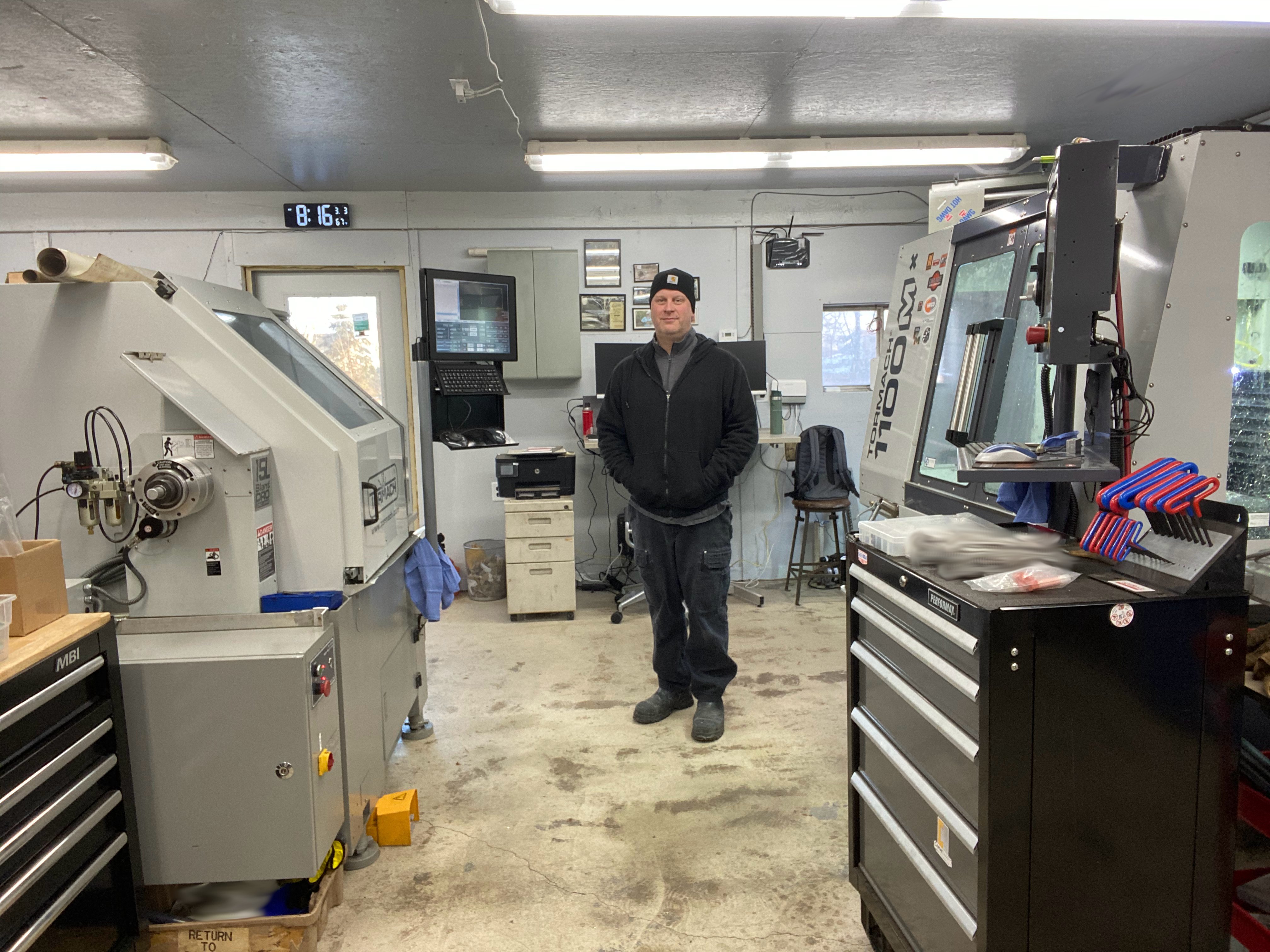Our mission here at Tormach is to empower people who make things, and what better way to do that by sharing the stories of the Tormaker Community - people just like you.
CNC machining started out as a hobby for Jon Working; he spent 18 years in engineering and fabrication, and now he's able to earn a living from the two Tormach machines in his own shop. Catch up with hobbyist turned business owner, Jon, below!
Q:What Tormach Machine do you use?
A: 1100MX Mill and 15L Slant-PRO Lathe
Q: Tell us more about your craft and what it is that you make?
A: I mainly reverse engineer and manufacture restoration parts for vintage vehicles. Customers will bring me a part that they can’t get anymore and ask me to make something that will look and function in the same way and they’ll order it from me.
I will be developing my own products as well. I’m looking at making furniture hardware - I made a drawer pull out that looks like a button for my wife’s craft room. I used the lathe to do part of the work and the mill to do the holes where the thread to go through.
CNC machining started out as a hobby. I did engineering and fabrication for a company for over 18 years and CNC machining was a hobby on the side. I started making a couple of these parts and it kind of grew, then this February I went full time doing it. I’m earning my living off these machines now in my own shop. I love it - working by myself, for my own shop, doing things the way I like. It doesn’t feel like work at all.
Q: What has been your biggest success with your Tormach this year?
A: The Tormach machines gave me the ability to continue my own business as a full-time venture and it definitely would not be possible without them.
The power requirements of the Tormach machines are a significant point too. I can run my entire shop for about $30 per month (less than 500 kWh) with both Tormach's running and several other machines 8-hour days, 5 days a week. Also, I don't need a phase converter.
Another aspect that was a big deal for me is that I am very self-reliant and I was able to install both machines myself, and when we moved this year, I could move them and set them up again with no help or expensive equipment. I just rented a small equipment trailer and used a pallet jack.
Q: And with all the good there is some bad...what's been your biggest failure in your shop?
A: I’ve broken a few end mills on the 1100MX. The lathe - I haven’t been able to break that yet.
I’m not trained as a machinist, so I’ve been learning and figuring things out as I go so, I don’t know what’s going to happen every time. Then when I do something and it works, I’ve got a little more experience every time. I’ve seen people do it but when I actually do it myself and it works, it’s great and now I know what I’m doing on that part of it so I can try and figure out the next step.
Q: How would you describe your Tormach in 3 words?
A: The Right Fit.
Q: What's one piece of advice you'd given to someone starting out with a Tormach machine?
A: I would say if you’re new to CNC, definitely start out with a Tormach. I tried doing a DIY conversion before I got mine and by the time it would be the equivalent size to the 1100, I realized I’d already spent more money and time trying to make the conversion work, whereas if I’d have got the Tormach straight away it would have worked as soon as I set it running.
YouTube is a great resource for learning how to use the machine - NYC CNC John Saunders and the Tormach channel have a lot of content showing what the machine could do. I would watch videos on there of people making parts to get a sense of it and how much the machine can do. An industrial machine can cut a big chunk of metal a lot faster but that’s not what I needed it to do. A lot of the parts that I make, the tool is already working as hard as it possibly can, and a bigger machine wouldn’t get it done any quicker.
Q: How would you rate Tormach out of 5 stars?
A: I would give Tormach 5 stars. I’ve had good luck with them. Sometimes I’ve had a problem with the machine, and they’ve taken the time to talk to me and explained that the problem I was experiencing could be fixed easily because it’s something I was doing and not the machine. I’ve talked to quite a few different people asking how do I fix this, how do I program to run multiple parts, etc,, and they helped me walk through the programming language for that so that I can put a link to the material in the layer, hit cycle start and go away to do something else while it makes multiple parts.



